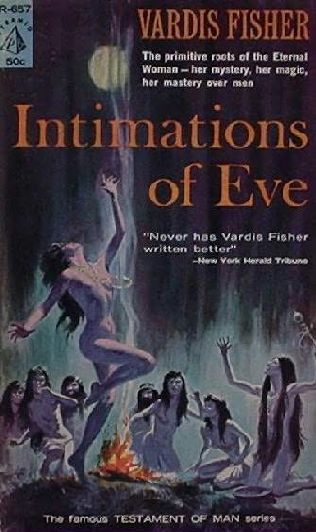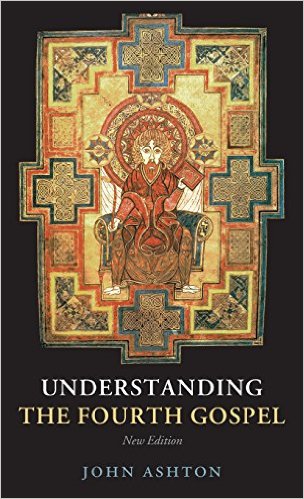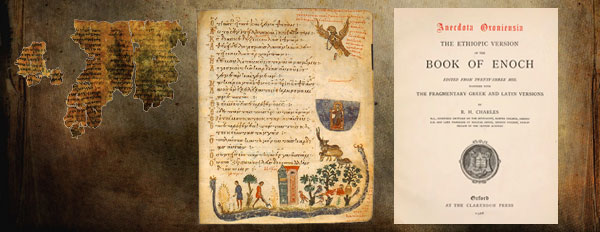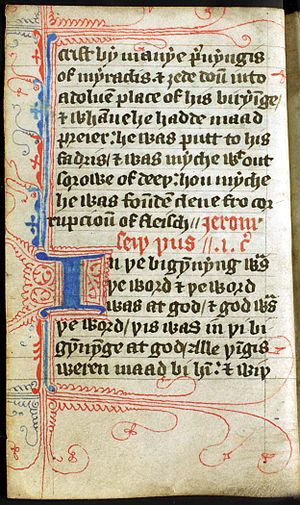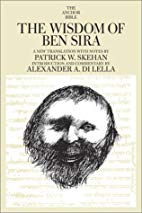The way Jesus is portrayed in the Gospel of John owes as much to the literary and theological culture of Jewish apocalyptic writings from the same era. Will set out the following in easier to follow table form on www.vridar.info soon.
Compare, for example, the Jewish Apocalypse of Abraham, possibly written around the same era as the gospels and other early Christian literature (parenthetic notes are mine and/or John Ashton’s (Understanding the Fourth Gospel, 2nd ed.)– some translation variations are from R. Rubinkiewiez):
1. Then a voice came to me speaking twice, “Abraham! Abraham!” and I said, “Here I am!” And He said, “Behold it is I, fear not for I am with you, for I AM before the ages, and Mighty, the God who created the first light of the world. I am your protector and your helper.”
2. “Go, take me a young heifer of three years, and a she-goat of three years, and a ram of three years, a turtledove and a pigeon, and bring me a pure sacrifice. And in this sacrifice I will lay before you the ages to come, and make known to you what is reserved, and you shall see great things that you have not hitherto seen:
3. because you have loved to search me out, and I have named you ‘my friend.’ (The text here in fact says ‘my lover.’) But abstain from every form of food that comes forth out of the fire, and from the drinking of wine, and from anointing yourself with oil, for forty days, and then set forth for me the sacrifice which I have commanded you, in a place which I will show you on a high mountain, and there I will show you the ages which have been created and established by my word, and I will make known to you what shall come to pass in them on those who have done evil and righteousness in the generations of men.”
4. And it came to pass when I heard the voice of Him who spoke such words to me, and I looked here and there, I found no breath in me, and my spirit was frightened, and my soul seemed as departed from me, for I fell down as a stone, as a dead man upon the earth, and had no more strength to stand. And while I was thus lying with my face towards the earth, I heard the voice of the Holy One speaking, “Go, Jaoel [or Yaoel — a contraction of the gods Yahweh and El], and by means of my ineffable Name raise up yonder man and strengthen him , so that he recovers from his trembling.
5. And the angel whom He had sent came to me in the likeness of a man [cf Dan. 7:13] and grasped me by my right hand and set me up upon my feet and said to me, “Stand up Abraham, 0 friend of God who loves you; let not the trembling of man seize you! For lo! I have been sent to you to strengthen you and bless you in the name of God, who loves you, the Creator of the celestial and the terrestrial. Be fearless and hasten to Him. I am called Jaoel [or Yaoel — a contraction of the gods Yahweh and El] by Him who moves those who exist with me on the seventh expanse over the heavens, a power in virtue of the ineffable Name that is dwelling in me [cf. Exod. 23:21]. I am the one who has been given to restrain, according to His commandment, the threatening attacks of the Living Ones of the Cherubim against one another, and to teach those who carry Him, the song of the seventh hour of the night of man.
6. I am ordered to restrain the Leviathan, for every single attack and menace of every single reptile are subject unto me. I am he who has been commissioned to loosen Hades, and destroy him who stares at the dead. (This ‘staring’ is an attitude of Satan, whereby he paralyses and victimises the dead.) I have been sent to bless you now, and the land which the Eternal One, whom you have invoked, has prepared for you, and for your sake I have wended my way upon earth [For your sake I have indicated the way of the land – cf Exod. 23:20].
7. Stand up, Abraham! Go without fear; be right glad and rejoice, and I am [also rejoice] with you! For age-lasting honour has been prepared for you by the Eternal One. Go, fulfil the sacrifices commanded. For lo! I have been appointed to be with you, and with the generations that will spring from you, and with me Michael blesses you forever. Be of good cheer and go!”
Compare the remarkable similarities between God and Yaoel above and Jesus in the Gospel of John:
Your father Abraham rejoiced to see my day, and he saw it and was glad. . . . Jesus said to them, “Most assuredly, I say to you, before Abraham was, I AM.” (John 8:56, 58)
But he saith unto them, It is I; be not afraid. (John 6:20) and Let not your heart be troubled, neither let it be afraid. (John 14:27)
Ye are my friends, if ye do whatsoever I command you. Henceforth I call you not servants; for the servant knoweth not what his lord doeth: but I have called you friends; for all things that I have heard of my Father I have made known unto you. (John 15:14-15)
Jesus answered and said unto him, Because I said unto thee, I saw thee under the fig tree, believest thou? thou shalt see greater things than these. And he saith unto him, Verily, verily, I say unto you, Hereafter ye shall see heaven open, and the angels of God ascending and descending upon the Son of man. (John 1:50-51)
I have yet many things to say unto you, but ye cannot bear them now. Howbeit when he, the Spirit of truth, is come, he will guide you into all truth: for he shall not speak of himself; but whatsoever he shall hear, that shall he speak: and he will shew you things to come. He shall glorify me: for he shall receive of mine, and shall shew it unto you. All things that the Father hath are mine: therefore said I, that he shall take of mine, and shall shew it unto you. (John 16: 12-15)
And hath given him authority to execute judgment also, because he is the Son of man. Marvel not at this: for the hour is coming, in the which all that are in the graves shall hear his voice, And shall come forth; they that have done good, unto the resurrection of life; and they that have done evil, unto the resurrection of damnation. (John 5: 27-29)
Then said Jesus unto them, Yet a little while am I with you, and then I go unto him that sent me. (John 7:33)
These things I have spoken unto you, that in me ye might have peace. In the world ye shall have tribulation: but be of good cheer; I have overcome the world. (John 16:33)
As Ashton observes, the question is not who copied from whom, but that both represent a common view of Abraham and the roles and natures of heavenly beings — God and Jesus or Yaoel and the Son of Man. Both depict comforting heavenly beings who have been sent to reveal great things to those who are to be henceforth their friends, and much more.
Like this:
Like Loading...


